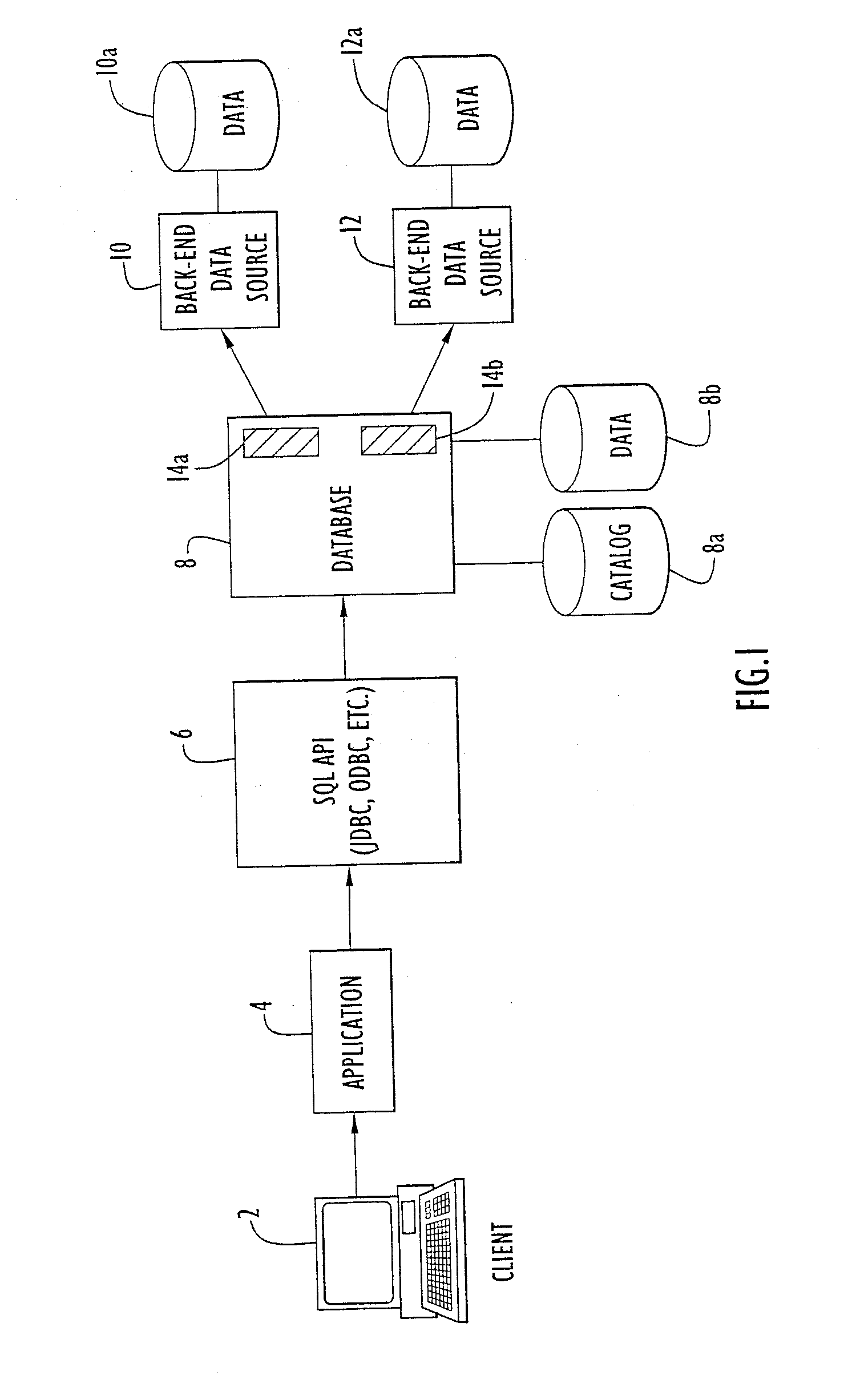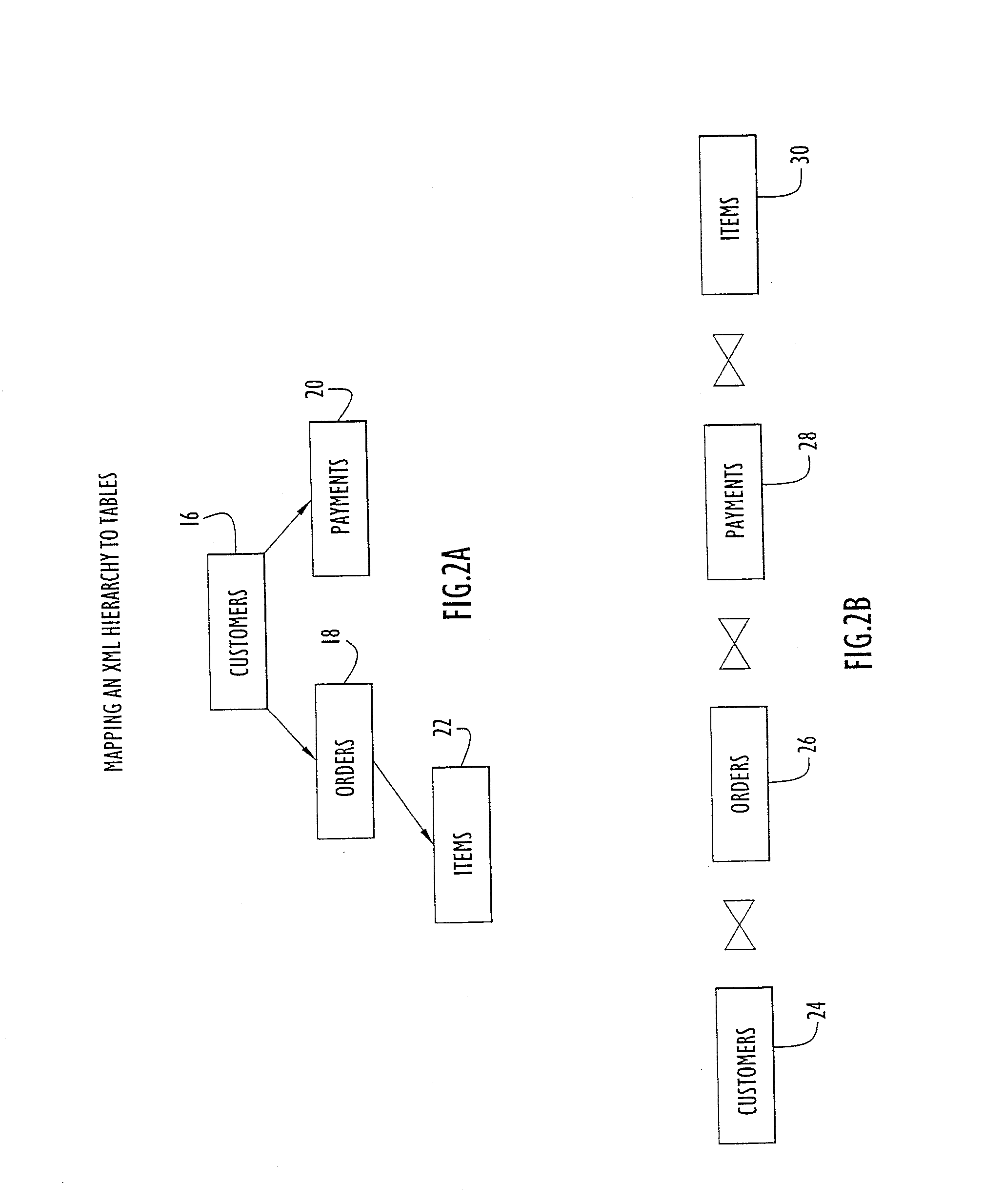Querying markup language data sources using a relational query processor
a markup language and data source technology, applied in data processing applications, semi-structured data querying, instruments, etc., can solve the problems of large amount of memory, and high cost of flat mapping operation
- Summary
- Abstract
- Description
- Claims
- Application Information
AI Technical Summary
Benefits of technology
Problems solved by technology
Method used
Image
Examples
Embodiment Construction
[0030] The embodiments described below are described with reference to the above drawings, in which like reference numerals designate like components.
[0031] A wrapper is described here for use with a relational database system to map hierarchical data contained in a markup language document, located in a source external to the database, into a relational schema composed of a set of tables. An example of such a markup language document is an Extensible Markup Language (XML) document. The XML wrappers described here enable use of conventional database languages, such as the Structured Query Language (SQL), to query external XML documents stored in files or in other locations such as the database. The wrappers can provide read-only access to XML documents.
[0032] An XML document contains elements, or nodes, related to one another in a hierarchical manner. The wrappers described here map certain elements in the XML document into a relational schema composed of a set of tables, or nickn...
PUM
 Login to View More
Login to View More Abstract
Description
Claims
Application Information
 Login to View More
Login to View More - R&D
- Intellectual Property
- Life Sciences
- Materials
- Tech Scout
- Unparalleled Data Quality
- Higher Quality Content
- 60% Fewer Hallucinations
Browse by: Latest US Patents, China's latest patents, Technical Efficacy Thesaurus, Application Domain, Technology Topic, Popular Technical Reports.
© 2025 PatSnap. All rights reserved.Legal|Privacy policy|Modern Slavery Act Transparency Statement|Sitemap|About US| Contact US: help@patsnap.com



